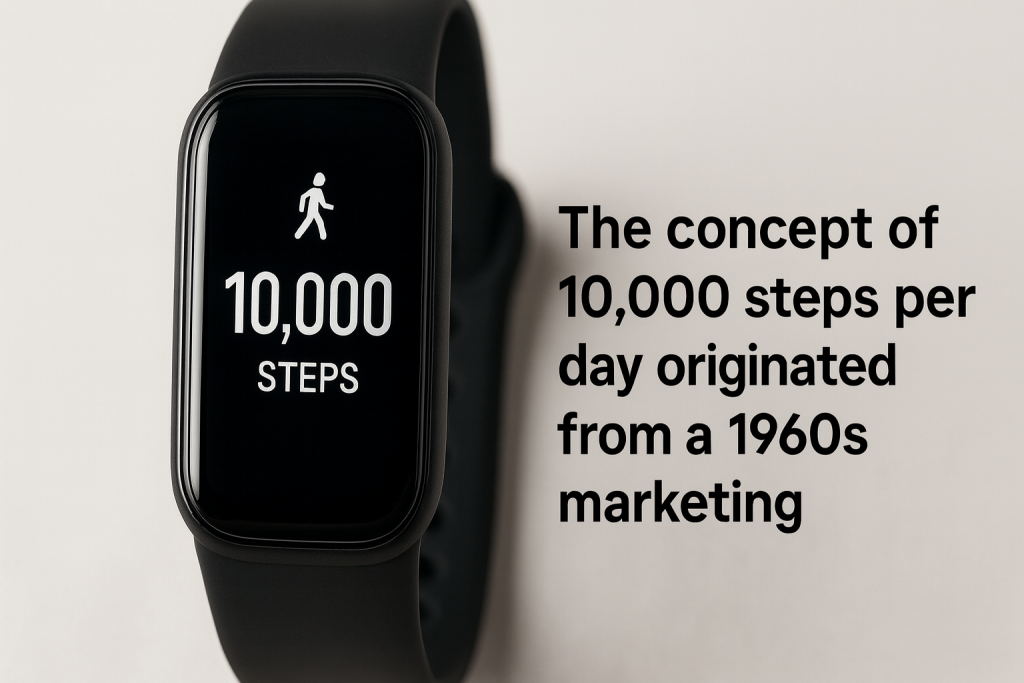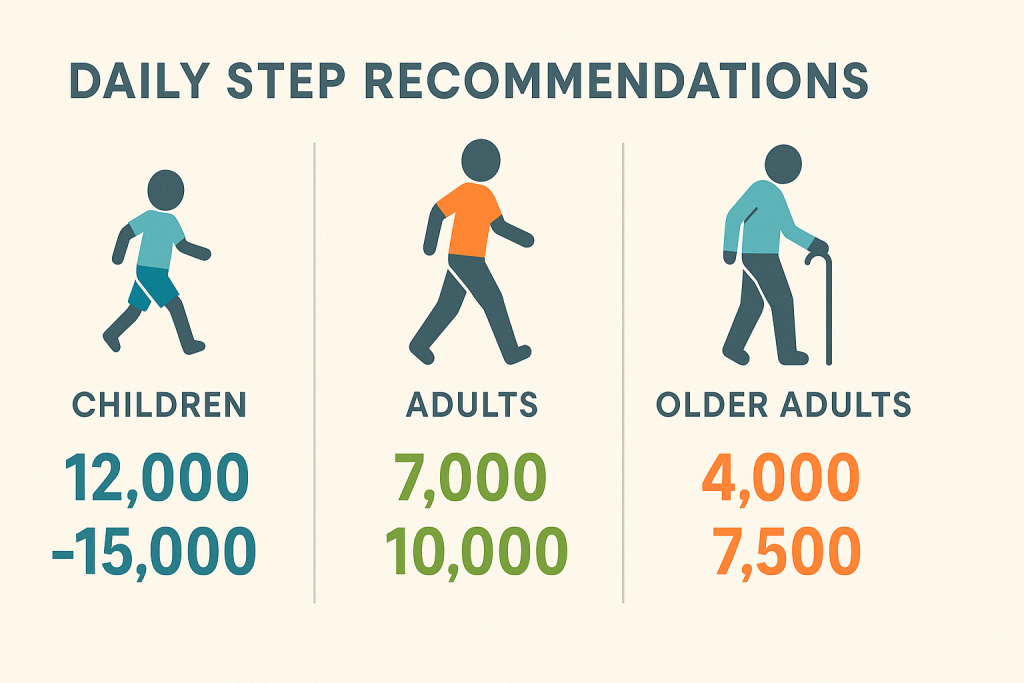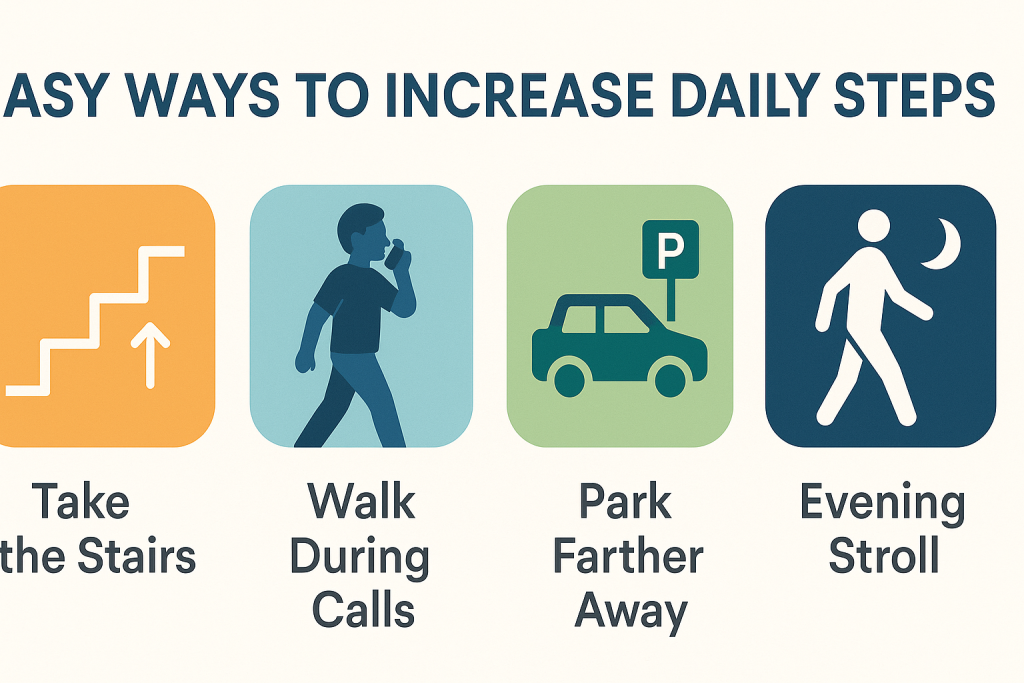Understanding the Science Behind Step Count Recommendations
You’ve probably heard that you should aim for 10,000 steps a day—but is this number truly the gold standard for health? The answer is more nuanced than you might think. Research continues to evolve, revealing that the ideal daily step count can depend on your age, fitness level, health goals, and lifestyle. In this comprehensive guide, we’ll explore the science behind step targets, the real benefits of walking, and practical strategies for making every step count.
Walking is one of the most accessible and effective ways to boost your overall health. Numerous studies indicate that higher step counts are linked to reduced risk of chronic diseases, improved weight management, and enhanced mental wellbeing. However, the “right” number of steps can vary significantly between individuals. Understanding these differences is crucial for setting a personalized, achievable target that fuels long-term health.
Let’s break down what current research says about daily step counts and how you can set a target that works for your unique needs.
Breaking Down the 10,000 Steps Myth
Where Did the 10,000 Steps Target Come From?
The widely popular goal of 10,000 steps per day actually originated from a 1960s Japanese marketing campaign for a pedometer called “Manpo-kei,” which translates to “10,000 steps meter.” While this number has become a benchmark, it wasn’t initially based on scientific evidence. Instead, it was chosen as a simple, memorable figure to motivate people to move more.
Despite its origins, recent scientific studies have examined whether 10,000 steps is necessary—or if fewer steps still provide substantial health benefits. The results might surprise you.

What Do Modern Studies Recommend?
Recent research suggests that significant health benefits can be achieved with fewer steps. For example, a 2019 study published in JAMA Internal Medicine found that among older women, as few as 4,400 steps per day were associated with a significantly lower risk of death compared to just 2,700 steps. Health benefits continued to increase up to about 7,500 steps, after which they plateaued.
For most adults, aiming for 7,000 to 8,000 steps daily is a practical and effective target. However, more active individuals or those with specific weight-loss or fitness goals may benefit from striving for 10,000 or more steps per day.

Health Benefits of Meeting Your Daily Step Goals
Physical Health Advantages
Walking is a simple yet powerful way to enhance physical health. Meeting your daily step goal offers a range of benefits, including:
- Cardiovascular Health: Regular walking can lower blood pressure, improve cholesterol levels, and reduce the risk of heart disease.
- Weight Management: Increasing your step count helps burn calories, supporting healthy weight loss or maintenance.
- Blood Sugar Control: More steps contribute to better blood glucose regulation, reducing the risk of type 2 diabetes.
- Joint and Bone Health: Weight-bearing activity strengthens bones and joints, reducing the risk of osteoporosis and arthritis.

Mental and Emotional Wellbeing
Physical activity, especially walking outdoors, is closely linked to improved mental health. Regular walking can:
- Reduce symptoms of anxiety and depression
- Boost mood and energy levels
- Enhance cognitive function and memory
- Reduce stress and improve sleep quality
Even moderate increases in step count can have a profound impact on your emotional resilience and overall wellbeing.

Personalizing Your Step Goal: Factors to Consider
Age and Health Status
Your ideal step count can depend heavily on your age and existing health conditions. Older adults or those with mobility challenges may benefit from lower targets, focusing on consistency rather than high volume. For children and teens, the World Health Organization suggests even higher activity levels—often 12,000 to 15,000 steps per day for optimal development.
People managing chronic illnesses or recovering from injury should consult with their healthcare provider to set a safe, sustainable step goal.
Lifestyle and Occupation
Sedentary jobs and lifestyles often require conscious effort to meet step goals. Meanwhile, people with active jobs, such as teachers or healthcare workers, may naturally accumulate more daily steps. Assess your baseline activity and adjust your target upward or downward to ensure it’s challenging, but realistic.
Consider tracking your normal step count for a week using a pedometer, smartphone, or fitness tracker to establish your baseline before setting new goals.
Fitness Goals
If you’re aiming for specific outcomes—such as weight loss, improved cardiovascular fitness, or athletic performance—a higher daily step goal may be beneficial. Pairing walking with other forms of exercise, like strength training or aerobic workouts, can further enhance results.
How to Track Your Steps Effectively
Pedometers and Fitness Trackers
Modern wearables and smartphones make step tracking simple and convenient. Devices like Fitbit, Apple Watch, and Garmin trackers automatically count your steps and provide insights into daily, weekly, and monthly trends. Using a tracker can also motivate you to move more by setting reminders, goals, and rewards.
For basic tracking, most smartphones have built-in health apps that monitor steps using GPS or accelerometer sensors. These tools can be a great starting point for beginners.
Tips for Accurate Step Tracking
- Regularly calibrate your device for accuracy
- Wear your tracker consistently each day
- Sync your wearable or phone with its health app to view progress
- Use additional tracking methods (like manual logs) if needed for reliability
Remember, it’s better to focus on consistent progress rather than perfect numbers.
Easy Ways to Increase Your Daily Step Count
Practical Tips for a More Active Lifestyle
Reaching your daily step goal doesn’t have to be daunting. With a few simple changes, you can easily add more movement to your routine:
- Take the Stairs: Skip the elevator and walk up stairs whenever possible.
- Walk and Talk: Take calls while walking around your home or office.
- Park Farther Away: Choose parking spots further from entrances to add extra steps.
- Schedule Walking Breaks: Set reminders to take short walks throughout your workday.
- Explore Your Neighborhood: Use evenings or weekends for leisure walks with family or friends.
Building these habits can make hitting your step goal feel natural and enjoyable.
Incorporating Steps Into Daily Activities
You can also boost your step count through everyday tasks such as grocery shopping, household chores, or playing with pets. Look for creative ways to stay on your feet and maximize movement throughout the day.
Expert Insights: How Many Steps Should You Really Aim For?
While the classic 10,000-step target remains a helpful guideline, most health experts agree that any increase in movement is beneficial. The American Heart Association recommends at least 150 minutes of moderate aerobic activity per week—often equivalent to about 7,000 to 8,000 steps a day for most adults.
Ultimately, the best step goal is one that fits your abilities, health status, and lifestyle. Consistency and gradual progress matter more than hitting an arbitrary number. Even smaller increases can make a meaningful difference, especially if you’re starting from a low baseline.
Frequently Asked Questions About Healthy Daily Steps
Is Walking Less Than 10,000 Steps Still Healthy?
Absolutely. Numerous studies show that benefits accrue with as few as 4,000 to 7,000 steps per day, especially for older adults or those new to exercise. The key is to avoid being sedentary and to engage in regular, moderate movement.
Can Too Many Steps Be Harmful?
For most people, walking more is generally safe. However, excessive step counts without proper rest or in the presence of injury can lead to fatigue or overuse injuries. Listen to your body, and consult a healthcare professional if you experience persistent pain or discomfort.
How Quickly Should I Increase My Step Count?
If you’re just starting, gradually increase your steps by 500 to 1,000 per day each week. This approach helps prevent injury and allows your body to adapt to greater activity levels.
Conclusion: Set Realistic Step Goals for Lifelong Health
Walking is a powerful, low-impact way to boost your health at any age. Whether your daily target is 5,000, 7,000, or 10,000 steps, the most important factor is consistency. Track your progress, set realistic goals, and look for opportunities to be more active every day. Remember: every step counts toward a healthier, happier you!
Start today by tracking your baseline and gradually building up. You’ll be amazed at the mental, physical, and emotional benefits that come from simply putting one foot in front of the other.


